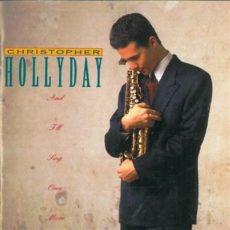
Daily Dose Of Jazz…
Christopher Hollyday January 3, 1970 in New Haven, Connecticut. He started playing alto when he was nine, developed quickly, and was playing in clubs by the time he was 14 years old. That same year he recorded his first album on his own Jazzbeat label. During his childhood years he was heavily influenced by Charlie Parker, but a few years later he almost sounded like a clone of Jackie McLean.
In 1988, he took a group into the Village Vanguard, and the following year he toured with Maynard Ferguson’s big band. One of the “Young Lions” at the end of the Eighties, his notoriety rose with his recording of four albums between 1989 and 1992 for the RCA Novus label. On his debut self titled album he enlisted Wallace Roney, Cedar Walton, David Williams and Billy Higgins, bringing in among others John Lockwood, Larry Goldings and Brad Mehldau .
In January 1992 he released his final album And I’ll Sing Once More with John Clark, Mark Feldman, Scott Colley, Kenny Werner, Scott Robinson and Douglas Purviance. After that, his recording career was interrupted abruptly when his record contract was not renewed at RCA Novus.
In 1997 he began a career as an educator, teaching first at the Orange Glen High School in Escondido, California, then switching to the Valley Center High School in Valley Center, California. Alto saxophonist Christopher Hollyday is currently teaching and working with jazz ensemble classes and the school band and continues to perform.
![]()
#preserving genius
More Posts: saxophone
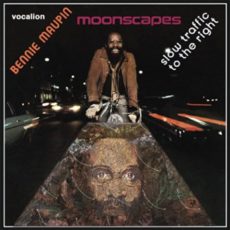
Daily Dose Of Jazz…
Bennie Maupin was born August 29, 1940 in Detroit, Michigan. He started playing tenor saxophone in high school and attended the Detroit Institute for Musical Arts, while playing locally. He moved to New York in 1963, freelancing with many groups, including ones led by Marion Brown and Pharoah Sanders.
Well known for his playing as a part of Herbie Hancock’s Mwandishi sextet and Headhunters band and for performing on Miles Davis’s seminal fusion record, Bitches Brew. Maupin has collaborated with Horace Silver, Roy Haynes, Woody Shaw, Lee Morgan and many others. He has also performed on several Meat Beat Manifesto albums.
Noted for having a harmonically-advanced, “out” improvisation style, while having a different sense of melodic direction than other “out” jazz musicians such as Eric Dolphy.
Maupin was also a member of Almanac, a group with bassist Cecil McBee, pianist Mike Nock and drummer Eddie Marshall. He has recorded a half dozen albums as a leader and another three dozen as a sideman with John Beasley, Marion Brown, Mike Clark, Miles Davis, Jack DeJohnette, Eddie Henderson, Andrew Hill, Darek Oles, Lonnie Smith, McCoy Tyner, Lenny White, Patrick Gleeson and Jim Lang.
Multireedist Bennie Maupin, who plays various saxophones, flute and bass clarinet, failed to catch on as a bandleader, thus maintained a low profile during the past 15 years, until emerging in 2006 with the critically acclaimed Penumbra followed two years later Early Reflections on the Cryptogramophone label, then on Vocalion with Slow Traffic To The Left, Moonscapes. He continues to perform and tour.
Sponsored By
![]()
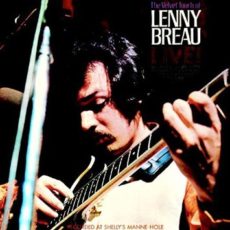
Daily Dose Of Jazz…
Lenny Breau was born Leonard Harold Breau on August 5, 1941 in Auburn, Maine. His francophone parents were professional country and western musicians who started their son playing guitar at the age of eight. At twelve he started a small band with friends and by the age of fourteen he was the lead guitarist for his parents’ band, billed as Lone Pine Junior, playing Merle Travis and Chet Atkins instrumentals and occasionally singing. He made his first professional recordings in Westbrook, Maine at the age of 15 while working as a studio musician. Many of these recordings were released posthumously on Boy Wonder.
In 1957 the family moved to Winnipeg, Manitoba,, and their new touring band became the CKY Caravan. It was at one of these shows that he met sixteen year old Randy Bachman and they soon became friends, eventually Lenny began informally teaching the young guitarist. Two years later he left his parents after his father slapped him in the face for using jazz improvisations on stage. He then sought out local jazz musicians and met pianist Bob Erlendson, who began teaching him more of the foundations of jazz.
1962 saw Breau leaving for Toronto and soon created the jazz group Three with singer/actor Don Francks and bassist Eon Henstridge. They performed in Toronto, Ottawa, and New York City, their music was featured in the 1962 National Film Board documentary Toronto Jazz, recorded a live album at the Village Vanguard and appeared on the Jackie Gleason and Joey Bishop shows. Returning to Winnipeg he became a regular session guitarist recording for CBC Radio, CBC Television and contributed to CBC-TV’s Teenbeat, Music Hop, and his own Lenny Breau Show.
An ensuing friendship with Chet Atkins resulted in Lenny’s first two LP issues, Guitar Sounds from Lenny Breau and The Velvet Touch of Lenny Breau. Live! on RCA. Moving around over Canada and the United States he finally settled in Los Angeles, California in 1983. There he spent years performing, teaching, and writing for Guitar Player magazine. Unfortunately he had continual drug problems stemming from the mid-1960s, which he managed to get under control during the last years of his life. However, on August 12, 1984 his body was found in the swimming pool at his apartment complex in Los Angeles and the coroner reported that he had been strangled. Though his wife Jewel was the chief suspect but was never charged with murder and the case is still unsolved.
Several tributes were created in honor of his contributions to guitar playing and jazz. A documentary titled The Genius of Lenny Breau was produced in 1999 by his daughter Emily Hughes that included interviews with Chet Atkins, Ted Greene, Pat Metheny, George Benson, Leonard Cohen, and Bachman. In 2006 the book One Long Tune: The Life and Music of Lenny Breau written by Ron Forbes-Roberts was published by the University of North Texas Press. CBC Radio presented a documentary-soundscape on Lenny Breau entitled On the Trail of Lenny Breau in 2009.
Sponsored By
![]()
More Posts: guitar
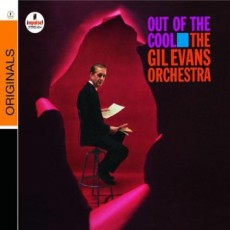
Daily Dose Of Jazz…
Gil Evans came into this world on May 13, 1912 in Toronto, Ontario, Canada as Ian Ernest Gilmore Green. His name was changed to his stepfather’s Evans early in his life. His family moved to Stockton, California where he spent most of his youth.
Between 1941 and 1948, Evans worked as an arranger for the Claude Thornhill Orchestra. His basement apartment behind a New York City Chinese laundry became a meeting place for musicians looking to develop new musical styles outside of the dominant bebop style of the day that included the leading bebop performer Charlie Parker, Gerry Mulligan and John Carisi.
In 1948, Gil collaborated with Miles Davis, Mulligan and others to create a nonet utilizing French horns and tubas keeping the big sound with less cost. The Davis-led group was booked for a week at the Royal Roost as an intermission group on the bill with the Count Basie Orchestra. Subsequently, Capitol Records recorded 12 numbers at three sessions in 1949 and 1950 that were reissued on the 1957 Miles Davis LP titled Birth Of The Cool. He was also instrumental in contributing behind the scenes to Davis’ classic quintet albums of the 1960s.
From 1957 onwards Evans recorded albums under his own name. He brought tubist Bill Barber, trumpeter Louis Mucci along with im and featured soloists Lee Konitz, Jimmy Cleveland, Steve Lacy, Johnny Coles and Cannonball Adderley. By 1965 he was arranging the big band tracks on Kenny Burrell’s Guitar Forms album.
Evans’ influence by Latin, Brazilian and Spanish composers Manuel de Falla and Joaquin Rodrigo as well as German expat Kurt Weill led him to create arrangements that included two basses, using Richard Davis, Paul Chambers, Ron Carter, Ben Tucker and Milt Hinton on many of his recordings. He was prolific in his recording until he became discouraged by the commercial direction Verve Records was taking with his arrangements for Astrud Gilberto’s Look To The Rainbow, causing him to take a hiatus from music.
During this period he began listening to Jimi Hendrix at the suggestion of his wife. He became interested in scoring the music of the rock guitarist, put together another orchestra in the Seventies and began working with in the free jazz and jazz rock idioms. He eventually released an album of arrangements of Hendrix’s music with John Abercrombie and RyoKawasaki and his ensembles featured electric guitars and basses, like that of Jaco Pastorious, from that date forward.
He would go on to release Where Flamingos Fly in 1981 with Coles, Harry Lookofsky, Richard Davis and Jimmy Knepper, Howard Johnson, Don Preston and Billy Harper. He created his Monday Night Orchestra in 1983 that became a staple for five years at Sweet Basil Jazz Club in Greenwich Village. Members of the band were Lew Soloff, Hiram Bullock, David Sanborn, Mark Eagan and Tom “Bones” Malone and Gil Goldstein among others. He recorded a big band album of The Police songs with Sting collaborating with apprentice arranger Maria Schneider.
Gil won two Grammy awards, has four films to his credit and was inducted into the Down Beat Jazz Hall of Fame in 1986. He ha a catalogue of eighteen studio albums, 16 live albums, arranged fifteen albums for Miles Davis, Hal McKusick, Helen Merrill, Johnny Mathis, Macy Lutes, Don Elliott, Astrud Gilberto and Kenny Burrell.
Pianist, composer, arranger and bandleader Gil Evans, who played an important part in the development of cool, modal, free and fusion styles of jazz, passed away of peritonitis in Cuernavaca, Mexico at the age of 75 on March 20, 1988.
![]()
More Posts: piano
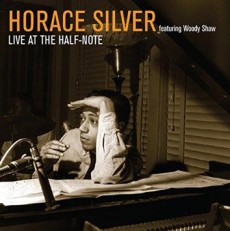
Daily Dose Of Jazz…
Horace Silver was born Horace Ward Martin Tavares Silva on September 2, 1928 in Norwalk, Connecticut to a mother from Connecticut and a father from Maio, Cape Verde. He began playing the piano as a child, receiving classical music lessons and Cape Verde folk music from his father. When he turned 11 he became interested in becoming a musician, after hearing the Jimmie Lunceford Orchestra.
From ninth grade Silver played tenor saxophone in the Norwalk High School band and orchestra, influenced by Lester Young. He played gigs locally on both instruments while still at school and around 1946 he moved to Hartford, Connecticut, taking a regular job as house pianist in a nightclub. His big break came around 1950, backing saxophonist Stan Getz at a Hartford club. Liking what he heard, Getz took Silver’s band on the road. With Getz he made his recording debut on the Stan Getz Quartet album, along with bassist Joe Calloway and drummer Walter Bolden.
The following year Horace left Getz, moving to New York City and worked at Birdland on Monday nights. During that year, he met the executives of Blue Note Records, eventually signed with them, and remained there until 1980. He also co-founded the Jazz Messengers with Art Blakey.
From 1951 he free-lanced around New York, recorded mostly his own compositions with his trio, featuring Blakey on drums and Gene Ramey, Curly Russell or Percy Heath on bass. Throughout his career he would record with Clifford Brown, Lou Donaldson, Kenny Dorham, Hank Mobley, Junior Cook, Blue Mitchell, Louis Hayes, Carmell Jones, Joe Henderson, Woody Shaw, Tyrone Washington, Michael and Randy Brecker, Lee Morgan, Benny Golson, Donald Byrd and Miles Davis All Stars.
He music reflected the social and cultural upheavals of the 60s and 70s as he briefly played electric piano and including lyrics in his compositions, and his interested in spiritualism also came into his music.
He received a National Endowment for the Arts Jazz Masters Award, recorded his final studio session in 1998 titled Jazz Has A Sense of Humor, was awarded the President’s Merit Award by the National Academy of Recording Arts and Sciences, penned his autobiography Let’s Get to the Nitty Gritty: The Autobiography of Horace Silver and published by University of California Press, and many of his compositions have become jazz standards.
Horace Silver, whose early influences were Bud Powell, Art Tatum, Teddy Wilson, Nat King Cole and Thelonious Monk, and who and influence for Bobby Timmons, Le McCann, Ramsey Lewis and Cecil Taylor, passed away of natural causes in New Rochelle, New York on June 18, 2014. The pianist and composer known for his distinctive playing style and pioneering compositional contributions to hard bop, featured surprising tempo shifts from aggressively percussive to lushly romantic merged with funk long before that word could be used in polite company.
More Posts: piano



